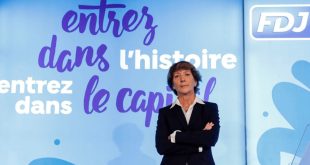
Expert industry analysis from Chandru Mullaparthi, the Chairman at Industrial Erlang User Group, Director at Bluehouse Technology, and former Head of Software Architecture at bet365.
____________________________________
“Innovate or die” is a reality of life for most consumer facing industries these days. As the pace of progress in the computing industry shows no signs of slowing down, disruption by innovative startups is an existential threat to established players in any market.
Online businesses are especially ripe for disruption as the tools and technologies required to start an online business are pretty much available for free with no strings attached. The online gambling and betting industry is no different. Given the recent surge in popularity of online gambling, established players have to innovate just to stay where they are in the marketplace.
Every step of the way, user experience comes first. There is a relentless demand for it to be easier and smoother, regardless of backend challenges. This has left the gambling industry in search of the most efficient and effective ways of directing users to their objective, whether it’s registering, playing a game, placing a bet, cashing out that bet or making a deposit. Systems must be ultra-responsive and able to engage with customers when, where, and how they want.
Those who get this ‘right’ in comparison to their competitors enjoy higher customer engagement and retention, and hence profits. And for each operator, this journey to support customer-centricity through the tech stack is slightly different.
Many established operators have legacy systems that are hard to scale or modernise whilst maintaining uptime and quality of customer experience. In my experience, those operators ought to take a step back, review their technology choices and evaluate which of the bewildering range of tech, old and new, can best be deployed in helping them achieve these customer-centric goals. It can help to spend some time imagining what an ideal sportsbook architecture would look like, without the burden of legacy, and then mapping out an evolutionary roadmap to get there.
Enter Erlang, a programming language that has been in the Tiobe Index top 40 only a handful of times. Erlang was invented by Ericsson to help it produce telephony switches in a cheaper and faster manner. The first version was created in 1986 and it was open sourced in 1998. It started attracting a small but dedicated following of tinkerers who were amazed by the ability it gave them to build real-time, concurrent, distributed systems. The productivity gains which Erlang gave them compared to mainstream programming languages were similar to the productivity gains a woodworker experiences from using a router compared to using a chisel.
Unlike Java or more recently Go, Erlang did not have a marketing machine publicising it. Despite that, Erlang has made steady inroads into industry domains as diverse as banking, healthcare, online advertising, social networking and, of course, online gambling and betting. bet365, the world’s largest online bookmaker, started using Erlang a few years ago and Erlang is very much part of their core tech stack. I’ve personally been involved in their journey of using Erlang successfully.
I’ve had the immense pleasure of personally knowing Mike Williams and Francesco Cesarini, authors of The route to the successful adoption of non-mainstream programming languages, for a long time. Mike was one of the original team which designed and implemented Erlang at Ericsson. Francesco started his career in the same place, and later founded Erlang Solutions, the world’s leading Erlang consultancy. While Erlang is still sometimes seen as exotic and obscure technology, both Francesco and Mike are dedicated to making sure that the benefits of using Erlang are accessible to all. And they’ve worked with them all – from WhatsApp to Klarna and Derivco.
If you’re interested in a not-so-mainstream programming language but are unsure about how the change management would work practically, I highly recommend this paper, and hope it motivates you to go after the right tool for the job in your organisation.
Chandru Mullaparthi
Chandru is Director of Bluehouse Technology where he builds products using a mix of technologies, including Erlang/OTP. Now chairman of the Industrial Erlang User Group, Chandru has been using Erlang/OTP since 1999 on an almost daily basis. Former Head of Software Architecture at bet365, he has used Erlang/OTP to build several mission critical systems in telecoms and betting domains.
Erlang Solutions
Erlang Solutions specialises in giving business truly scalable solutions through the creation, integration, delivery, and lifetime support of products and services based on the Erlang programming language. Four of the world’s top bookmakers currently look to Erlang Solutions for technical know-how. Learn more about Erlang Solutions’ work in the online gambling & betting industry.









